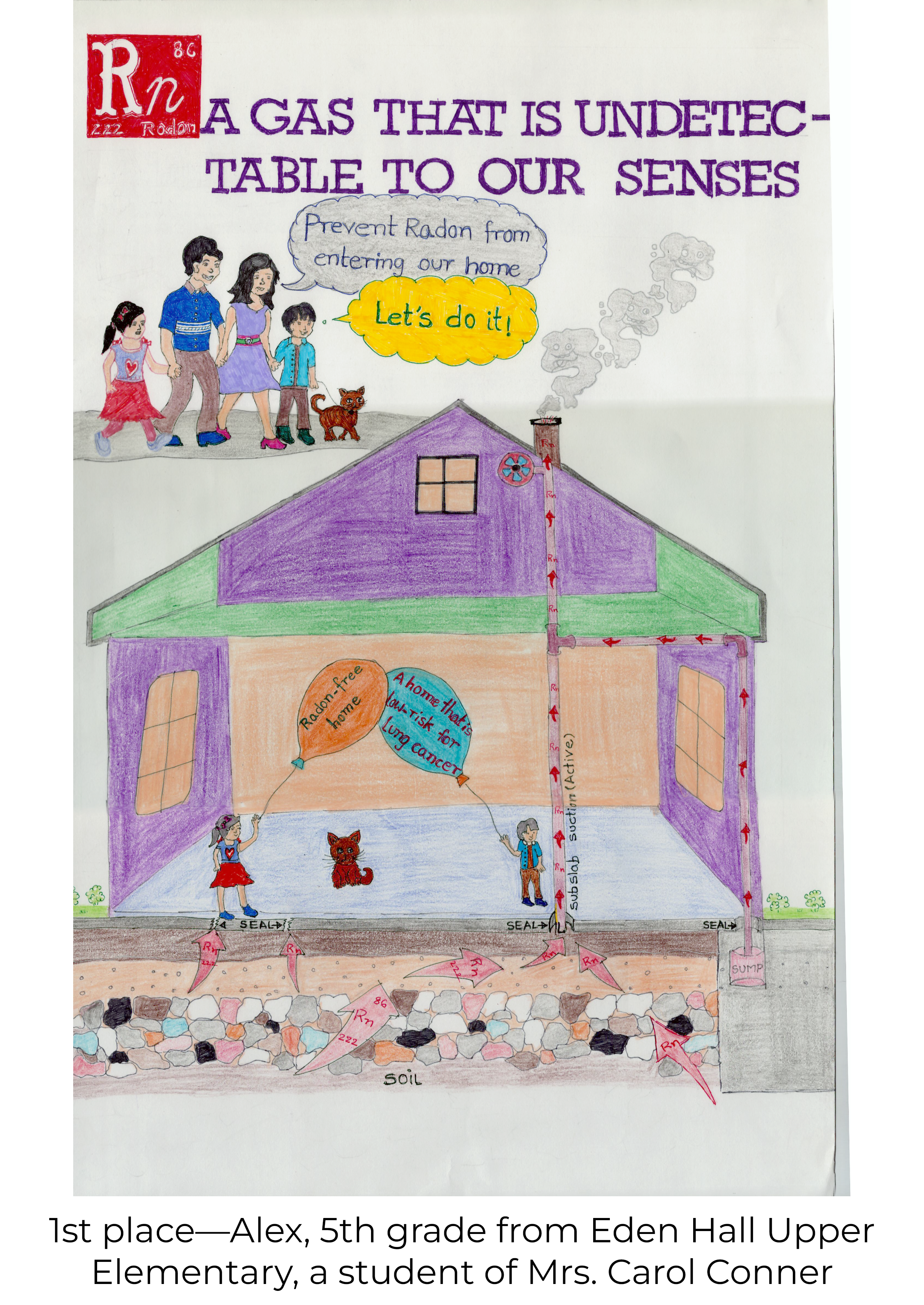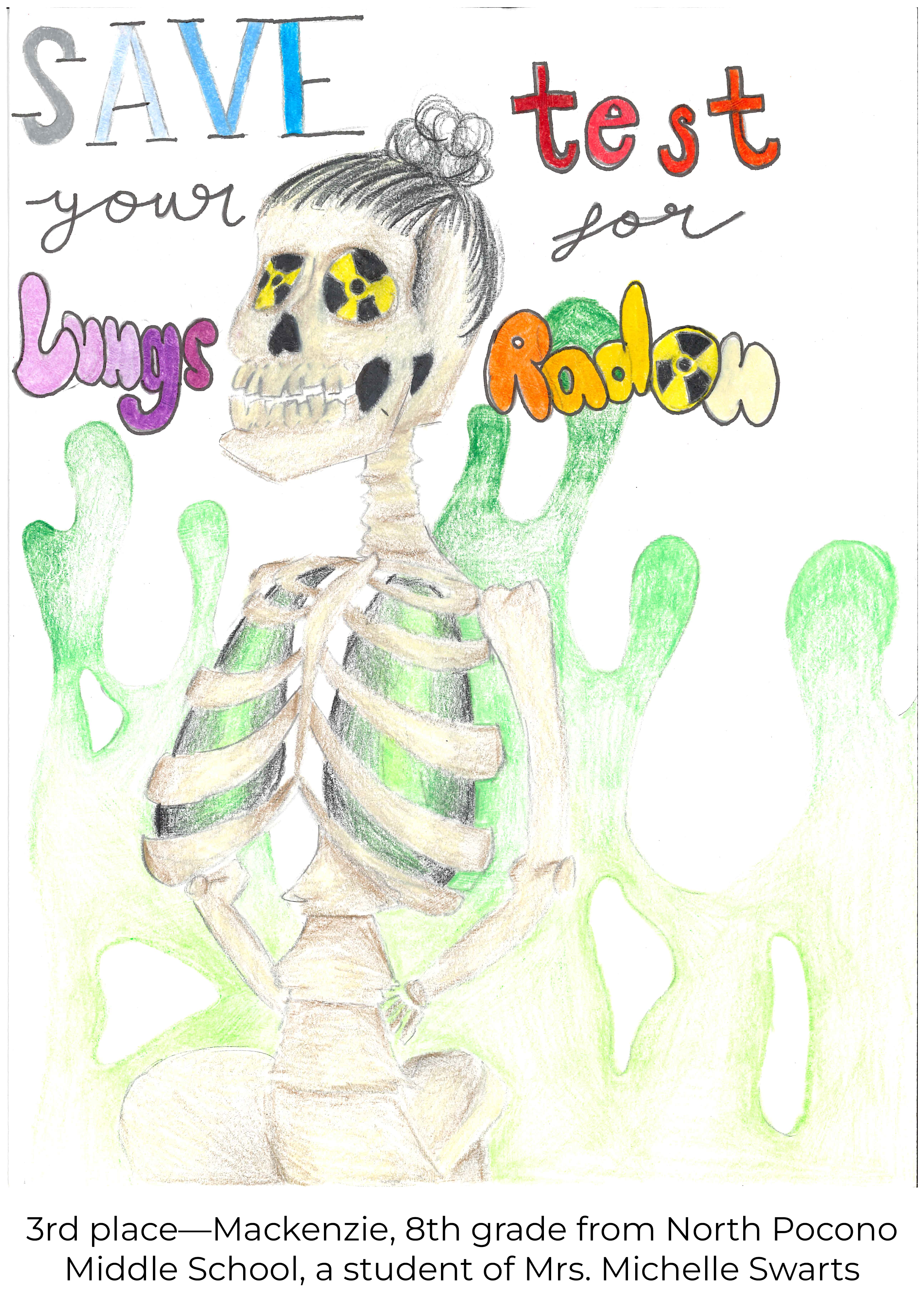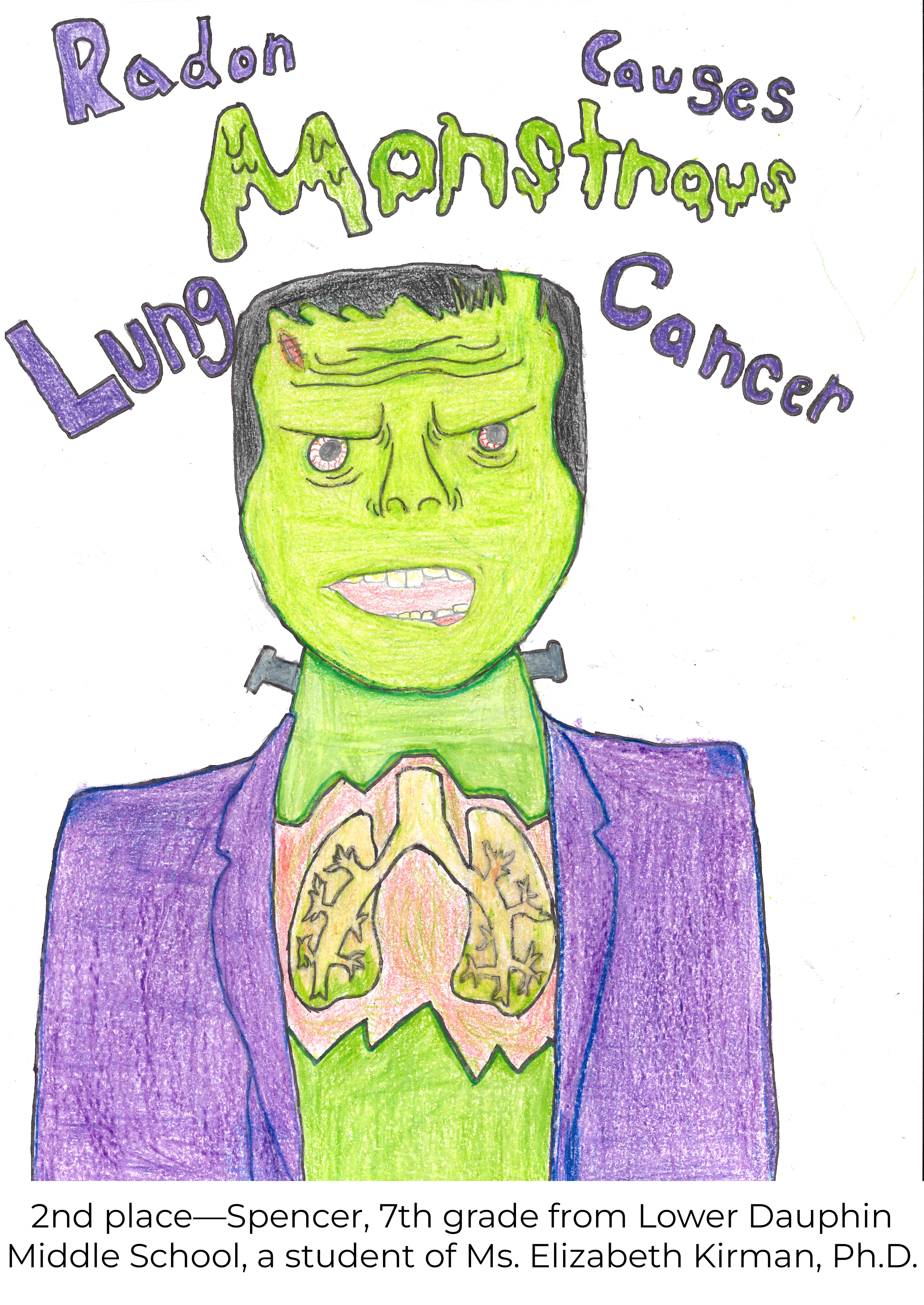Pennsylvania Student Radon Poster Contest 2024
Goal: Raise Awareness of the Importance of Radon Testing
Radon is a colorless, odorless and tasteless gas that can kill. The Surgeon General lists radon exposure as the second leading cause of lung cancer in the United States. This radioactive element comes from the ground and can easily enter homes and other buildings through foundation openings. The only way to detect the amount of radon present is to test.
The solution is to reduce the number of homes with elevated levels of radon. This contest is designed to inform Pennsylvanians of the danger of radon in their homes and raise their awareness of the importance of testing their home for radon.
Contest Eligibility and Instructions
Children ages 9-14 are eligible. They can be enrolled in a public, private, or home school, or may enter the contest through a sponsoring club, such as an art, computer, reading, science, or 4-H club or scouting organization.
How to Submit Your Entry
The entry deadline is
November 1, 2023.
Print the
Artwork Submission Form and fill it out. Attach the form to the back of your poster. This is the only way we know who submitted the poster!
Mail your poster to:
Pennsylvania Department of Environmental Protection, Radon Division
Attn: Jamie Ruminski
P.O. Box 8469
Harrisburg, PA 17105-8469
Poster Topics
Choose one of the following six topics:
- What is radon?
- Where does radon come from?
- How does radon get into our homes?
- Radon can cause lung cancer.
- Test your home for radon.
- Mitigating radon in your home.
Artwork Requirements
Artwork must meet the following requirements:
- Use white paper.
- Paper size: 8.5 x 11 or 11 x 17 is preferred, but all submission sizes will be accepted.
-
Must not have student’s name on the front.
- Topic and title must be on the Artwork Submission Form.
- Poster can be created with crayon, markers, paint (watercolor, tempera, acrylic), collage, colored pencil, photographs or computer graphics.
- Copyrighted characters (such as Snoopy), product logos and trademarked or brand names cannot be used.
- Lettering and message should be large enough to reproduce well, with all pencil markings erased.
Judging Criteria and Selection of Winning Posters
Poster entries will be judged on the following criteria:
- radon subject matter accuracy
- visual communication of topic
- reproducibility, and
- originality.
A panel of Pennsylvania Department of Environmental Protection staff select the top three posters across the state.
DEP enters the first-place poster into the 2024 National Radon Poster Contest, sponsored by the Conference of Radiation Control Program Directors. All three winning posters will be used throughout the year in DEP’s educational outreach to Pennsylvanians.
Radon Information Resources
Tips for an Eye-Catching Poster
- A good poster will make people
Stop, Read, and Remember.
- Read the rules/guidelines carefully and follow the directions.
- Do some research on radon.
- Be sure the information you put on the poster is correct.
- Think and be creative. Come up with a catchy idea or ideas.
- Start out by drawing or sketching your idea or ideas onto regular paper.
- Ask adults to tell you what they think of your ideas.
- Use a pencil first and do ALL the sketching/drawing, but pencil markings must be erased for the final poster so draw lightly.
- Use a ruler to lightly draw lines on your paper for the title or theme or slogan (remember to erase pencil marks).
- Be neat and clean. Try not to smudge the pencil or markers. Taking a moment to wash your hands a time or two will help.
- Lettering should be 1 to 2 inches tall, so it is easy to read from a distance. You can use stencils to help you do neat lettering.
- Use short phrase instead of long sentences. Be sure all your words are spelled correctly.
- Don’t use different colors for each word or letter. This is hard to read.
- Don’t put lots of information on the paper. This is too cluttered.
- Draw a picture or pictures that help to teach your idea or message.
- Don’t draw really small or put too many drawings on your paper.
- When you’re happy with your drawing, then you’re ready to start coloring.
- Color the poster with colored pencils or crayons.
- Outline your coloring with fine tipped markers.
Past Winners of the Pennsylvania Student Radon Poster Contest
2024


